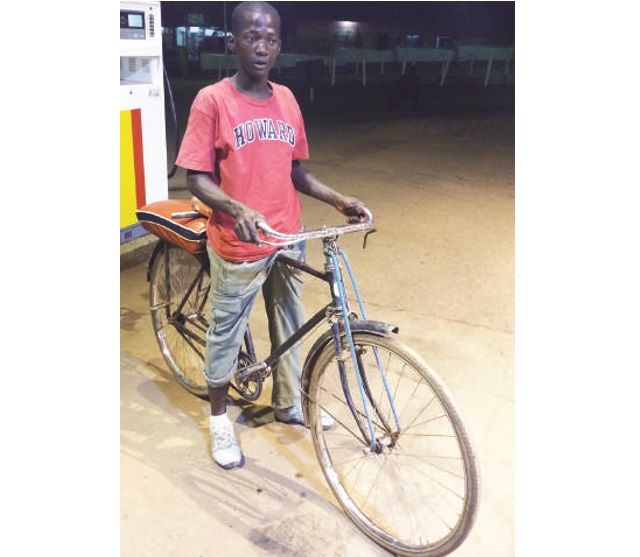
Here is how you can avoid getting saddle messed up
Bicycling is a great form of exercise. It provides the same health benefits as walking, jogging, swimming, and other aerobic activities. Some men and women avoid bicycling, though, because of numerous reports suggesting it may damage their reproductive organs and harm their sexual function.
In 2012, Dr. Harvey B. Simon wrote in `Harvard Health’ that “science supports this worry” but it mainly applies to people who cycle a lot.
Now two studies from Kenya published within a week of each other this May might have finally put a number to what Dr. Simon possibly should have meant by “cycle a lot”.
A study by a team including Dr. Isaac Wamalwa, a practising consultant gynaecologist in Nairobi, found that men who cycle for more than 60 hours per week risked erectile dysfunction. These are mainly mechanical boda boda bicycle taxi riders.
One of them; Gideon, who has distributed sodas on a bicycle in Nairobi, for 12 years, says cycling might have contributed to his three wives leaving him as he became impotent.
“It is a matter of either putting bacon on the table or keeping the bedroom fire burning. I chose the latter,” says Gideon.
“I am now telling young men to go slow on the pedal,” he adds.
Wamalwa’s teamlooked at the reproductive health of 115 boda boda riders, aged below 40, and found more than 35.9% suffered erectile dysfunction. The period one has been riding did not seem to matter so much, but the length of riding in hours per week did.
“None of those who rode for more than 60 hours per week had a normal erectile function,” says the report.
But equally important, Wamalwa says, is the erectile health of thousands of young men cycling for long hours on stationary bikes in gyms.
“Our message is important for them as well, take regular breaks in between cycling,” Wamalwa says.
The other study came from another team of medical experts from Moi University’s School of Medicine. This study enrolled 350 males aged between 18 and 65 years at an average of 40, about half of them boda boda riders. The others were noncyclists involved for comparison purposes. According to this study, 131 of the cyclists, 76% reported experiencing ED. In contrast, all of the noncyclists reported to be sexually active and only 61 or 33 per cent experienced erectile dysfunction. It concluded that prolonged cycling increases the risk of developing ED.
The two studies agree that cycling is associated with changes in penile blood flow and a decrease of oxygen pressure to the genitals, and when prolonged can lead to ED.
However, there are many studies that report that a link between cycling and male sexual dysfunction is a myth.
In the largest study on cyclists to date, researchers analysed nearly 5,300 male riders but found no positive association, according to study author Milo Hollingworth of University College London. However, the period in the saddle considered long in this study was a mere eight and a half hours a week. Based on this they concluded that “recreational riders and commuters shouldn’t need to worry”.
Possibly torn between the various studies, there is a group that is more pragmatic. If you must cycle, it says, there are many things you can do to protect your sexual health as you cycle to improve your overall health.
Blame it on the bike seat
This group says the first step is ensuring you use a safe bicycle seat. According to them, when you sit on a chair, your weight is distributed across both buttocks. This takes pressure off the perineum, a region of the body that runs from the anus to the sex organs. It contains the nerves and arteries that supply the penis in men and the clitoris and labia in women. Sitting on a bicycle seat puts pressure on the perineum, compressing those crucial nerves and arteries. This can lead to loss of sensation and other problems.
Nerve damage accounts for the penile numbness that some male bikers experience. Pressure on the pudendal artery can add to this nerve injury to produce temporary or prolonged erectile dysfunction. A narrow bike seat can reduce blood flow to the penis by as much as 66%, and even a broad seat may reduce flow by 25%. The same processes account for bicycling-related sexual problems in women.
So you can possibly do the following:
- Don’t use a racing seat with a long narrow nose. Pick a wide seat, ideally with plenty of padding. Special gel-filled and shock-absorbing seats are even available.
- Don’t tilt your seat upward, a position that increases pressure on the perineum.
- Be sure your seat is at the correct height, so your legs aren’t completely extended at the bottom of your pedal stroke.
- For extra protection, consider wearing padded biking pants.
- Raise the handlebars so you are sitting more upright.
- Shift your position and take breaks during long rides.
Perhaps the best advice is to make biking part of a balanced fitness program instead of relying on it exclusively. If biking is your “thing,” mix it up. Exercising a few simple precautions could ensure that your passion for exercise doesn’t interfere with your passion in the bedroom.
****
 The Independent Uganda: You get the Truth we Pay the Price
The Independent Uganda: You get the Truth we Pay the Price




Thank you for posting this awesome article. I search since a long time an answer to
this subject and I have finally found it on your site. I registered your blog
in my rss feed and shared it on my Twitter.
I will come back for sure to check your future posts!